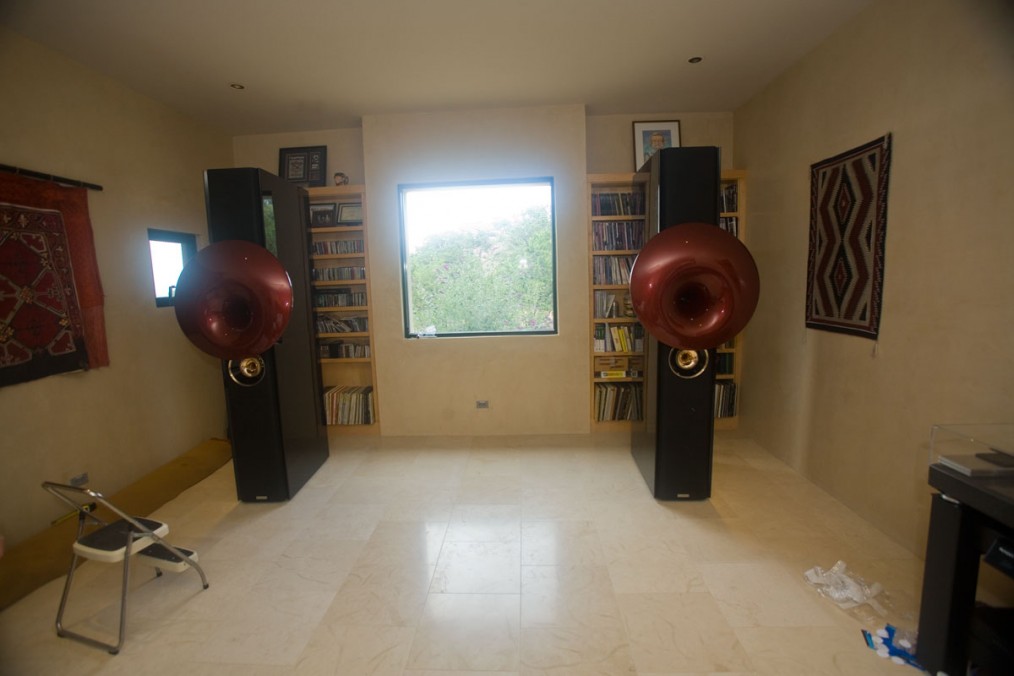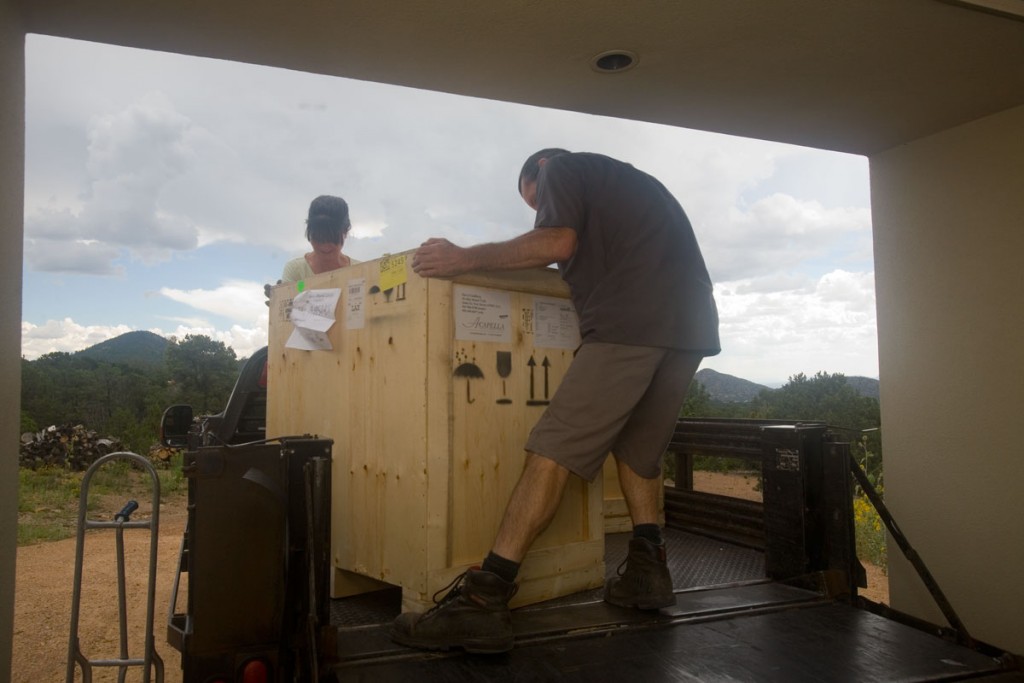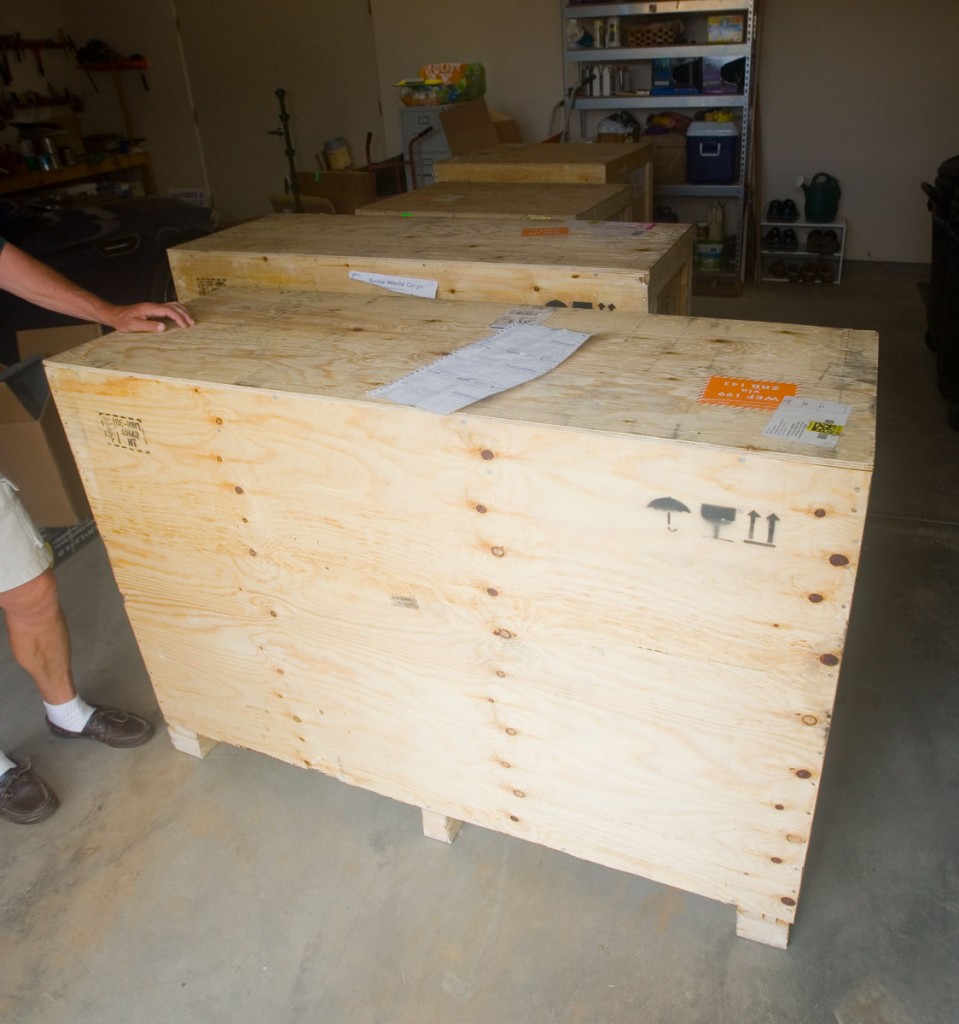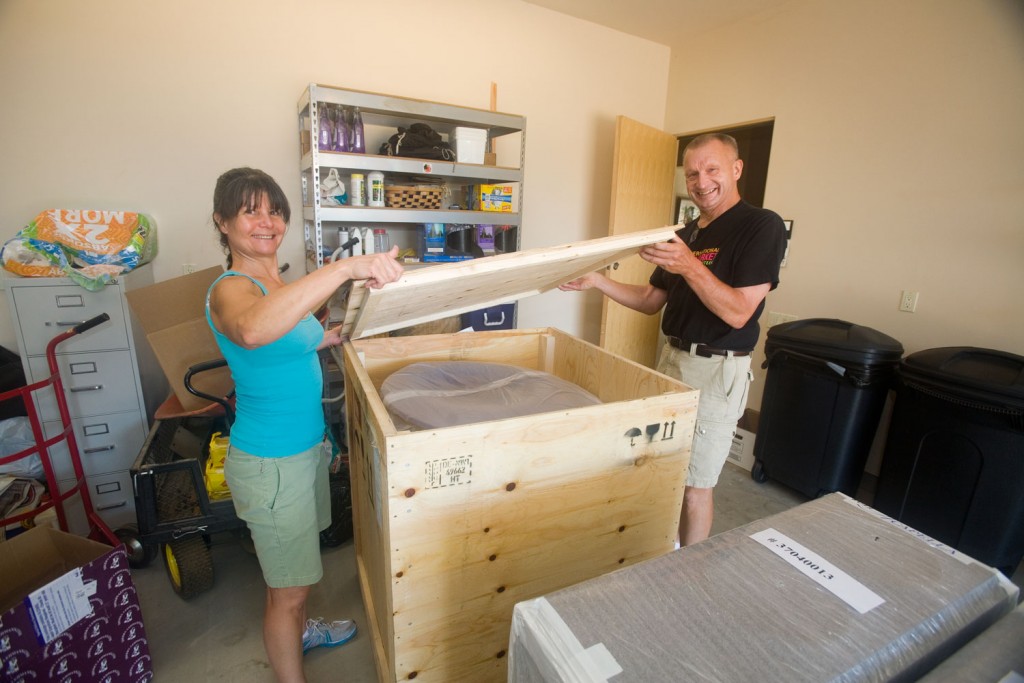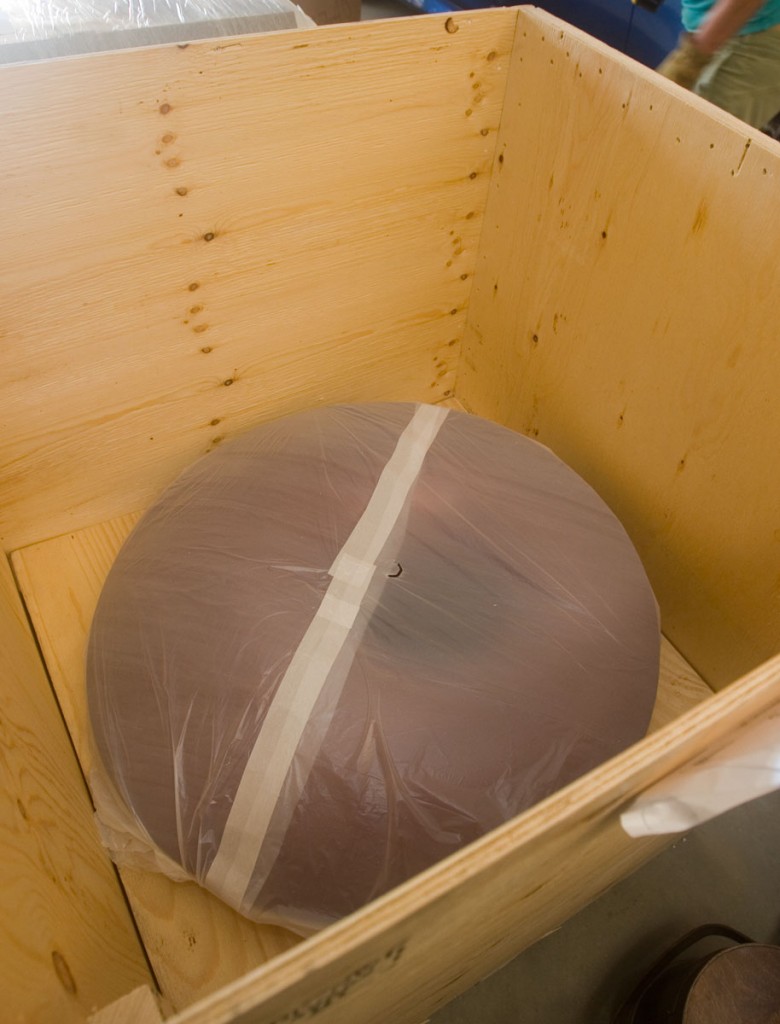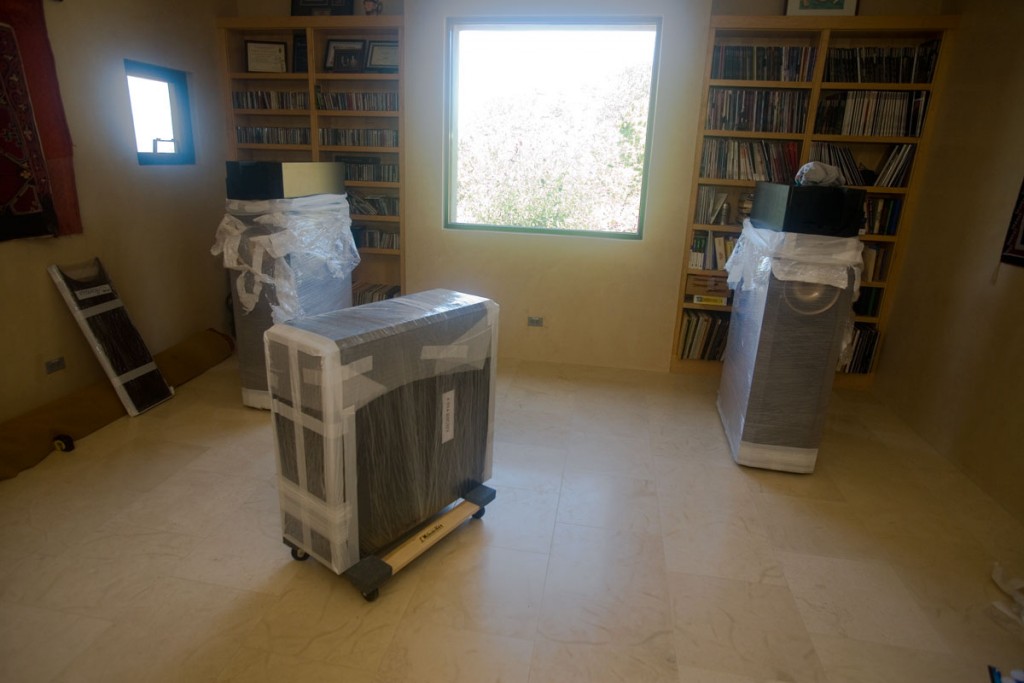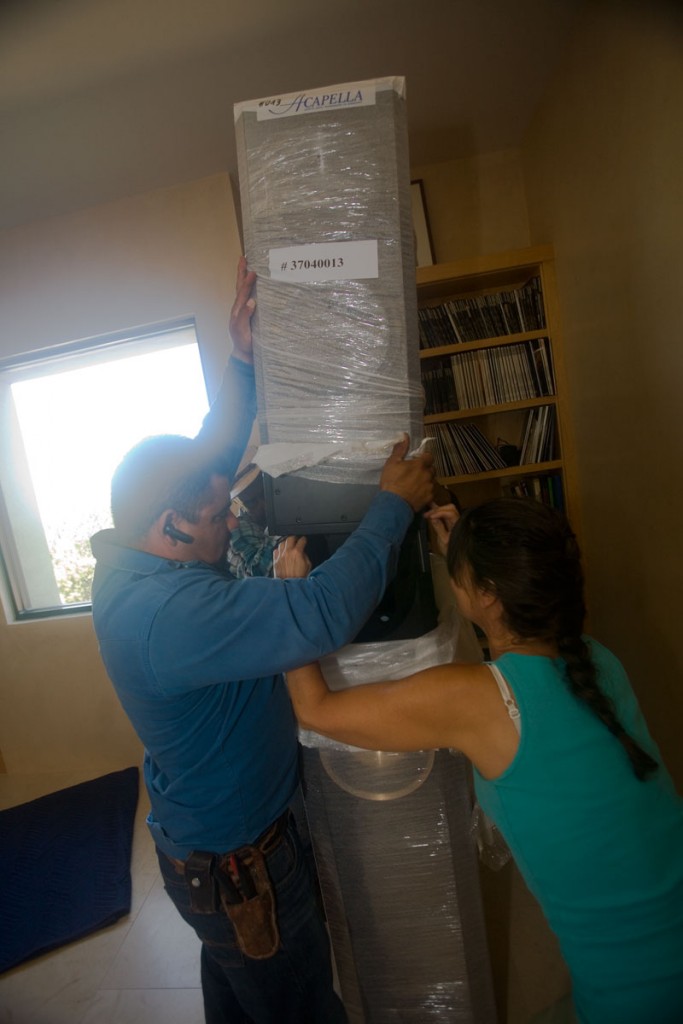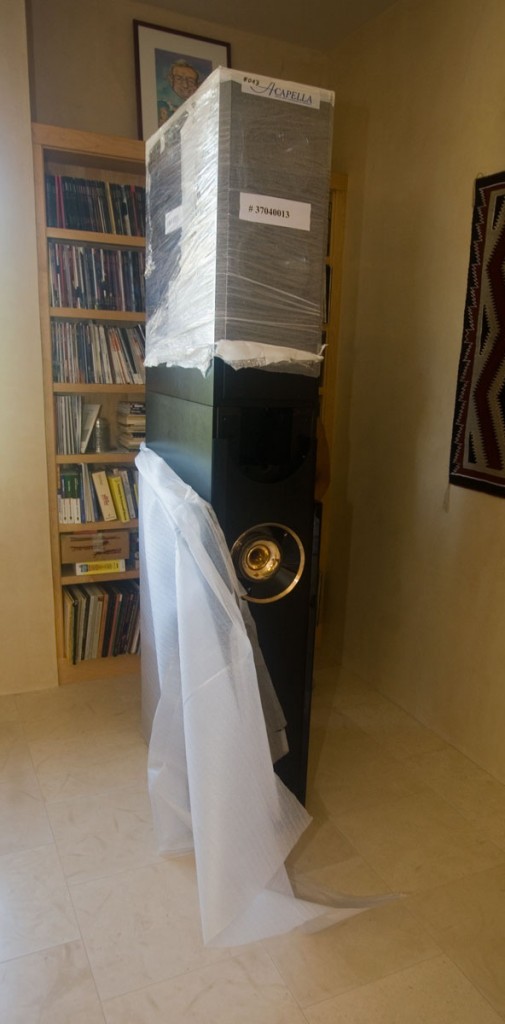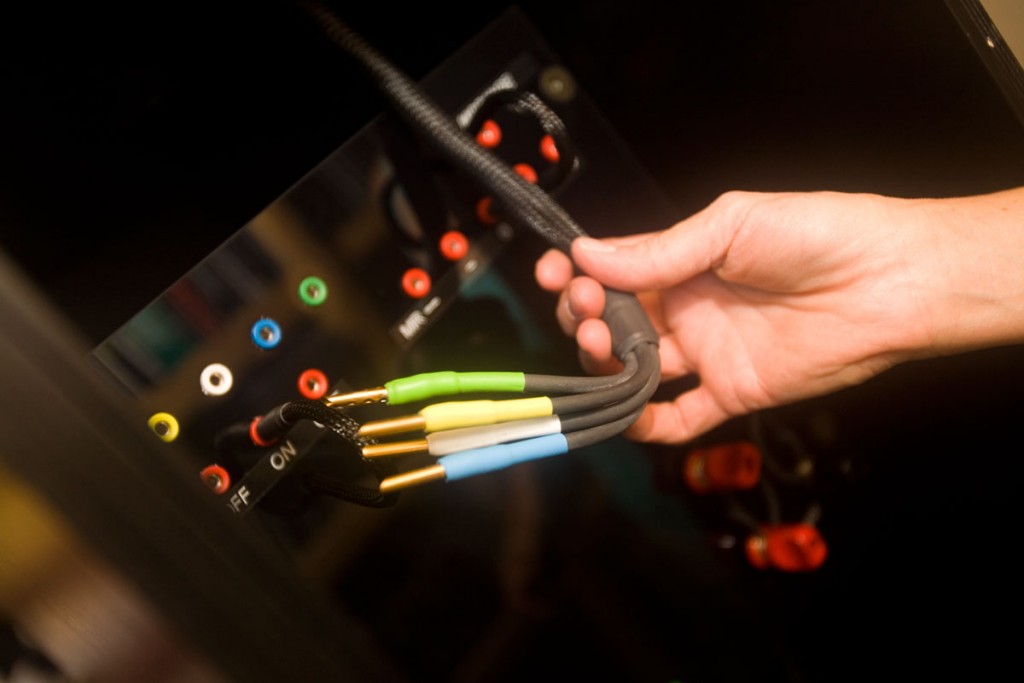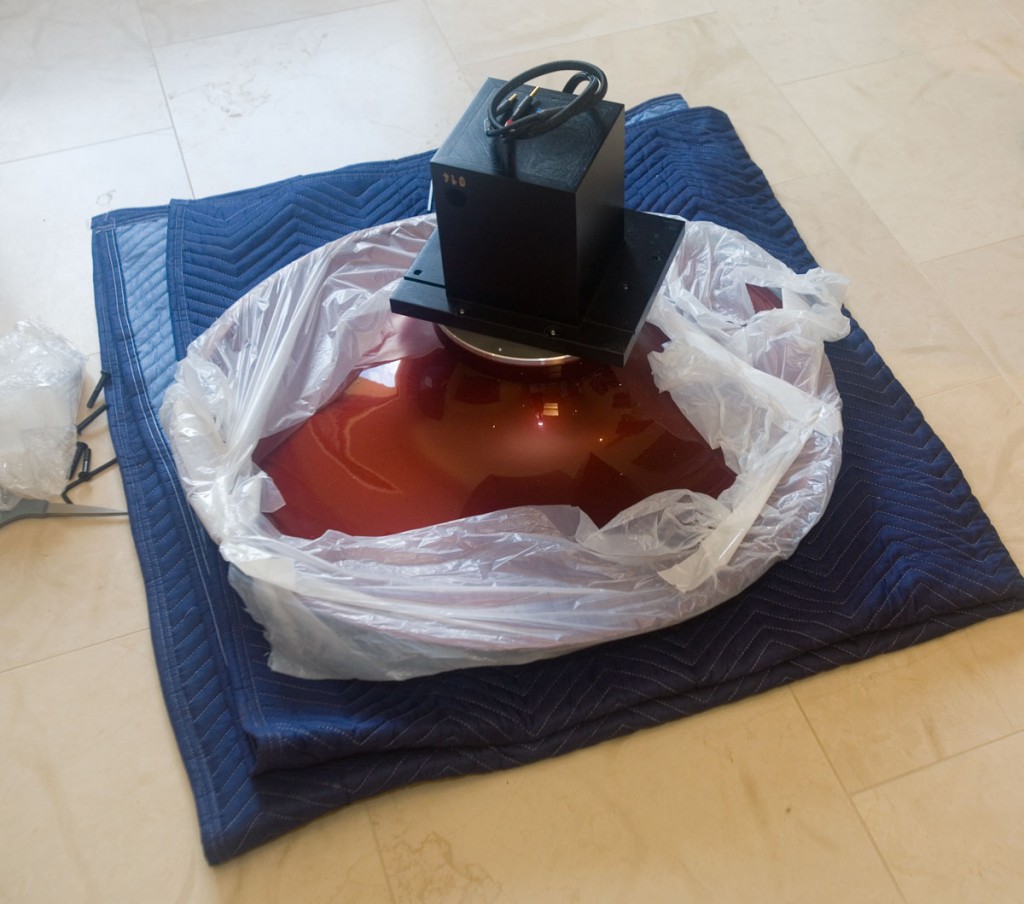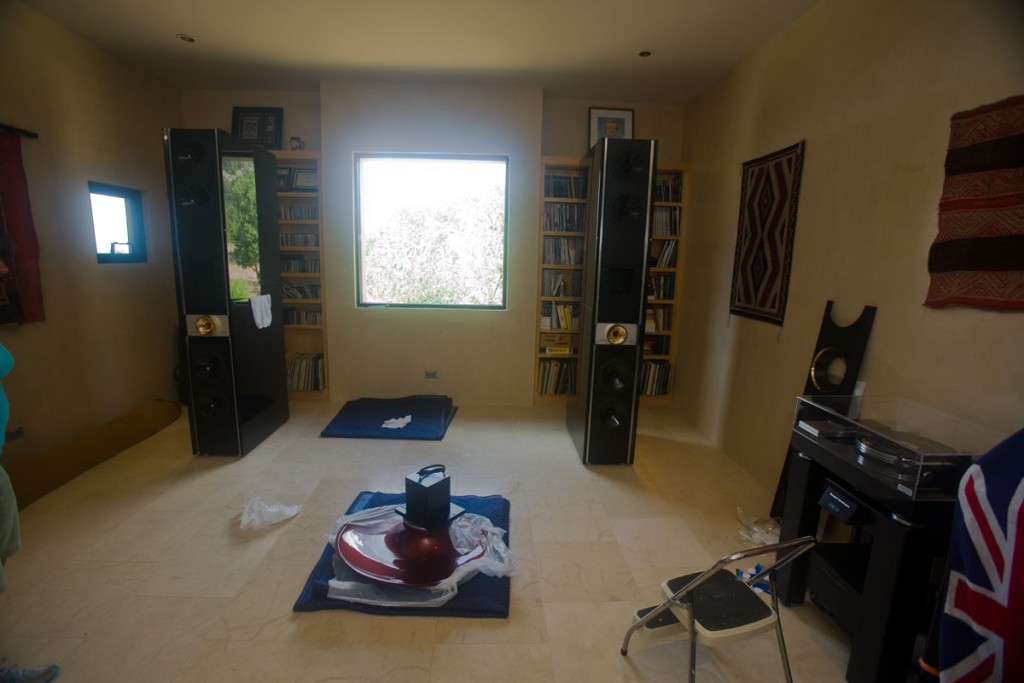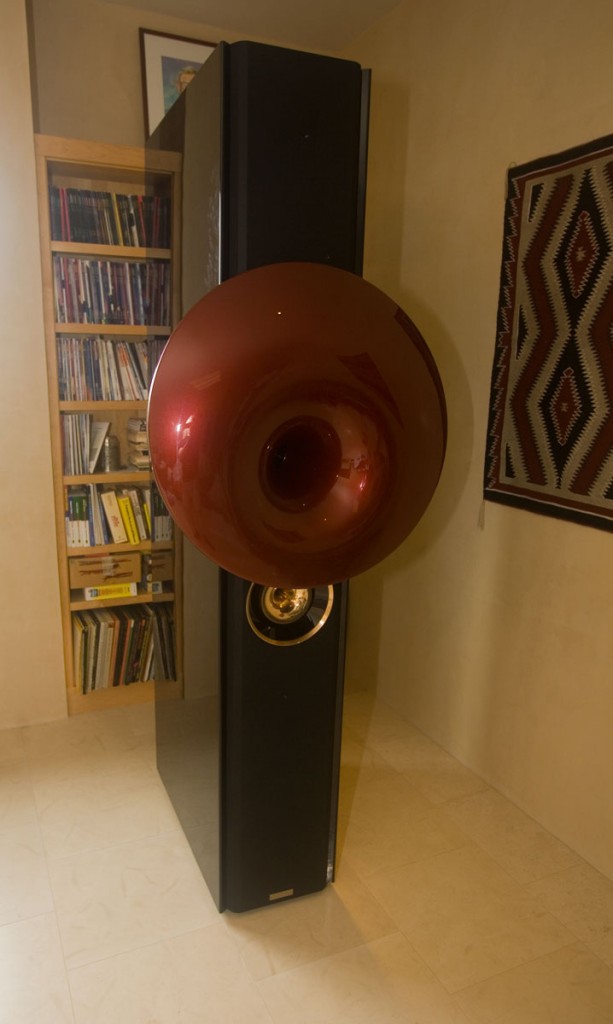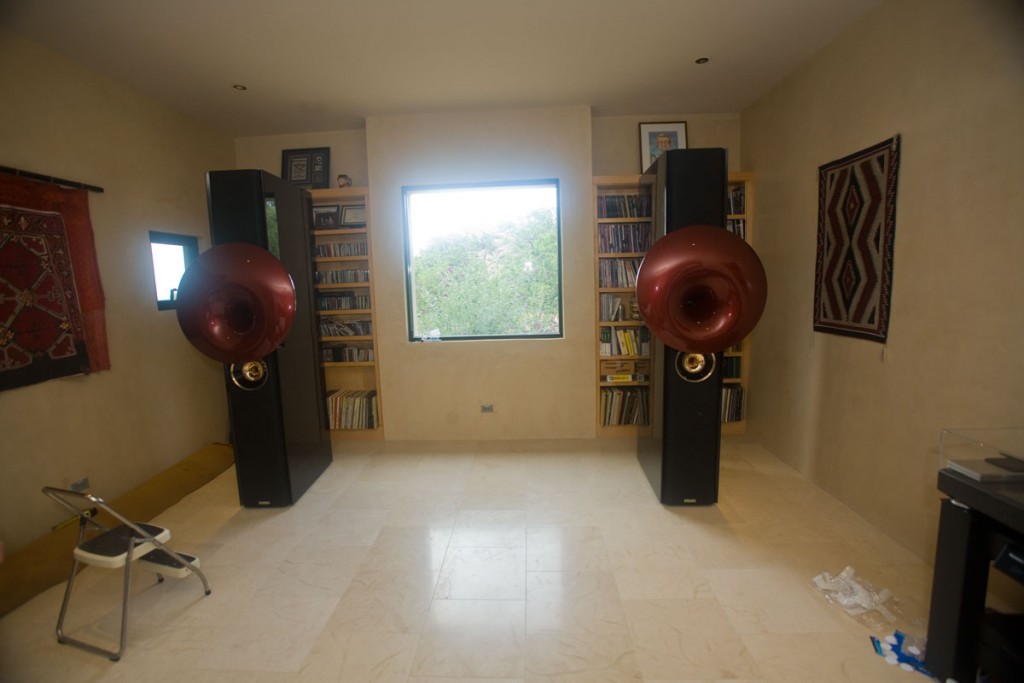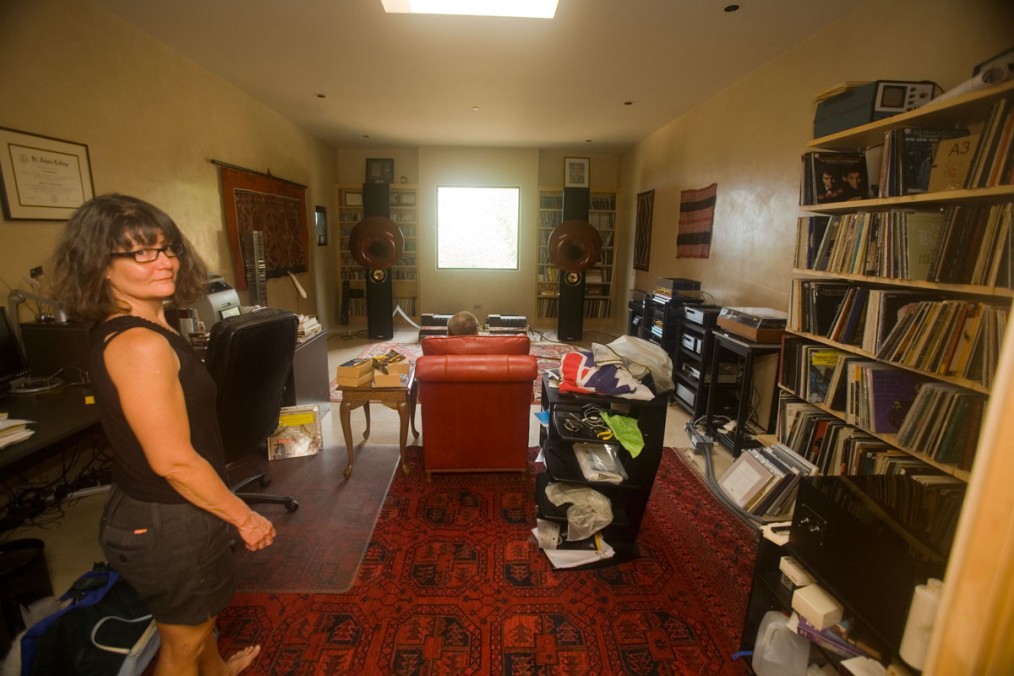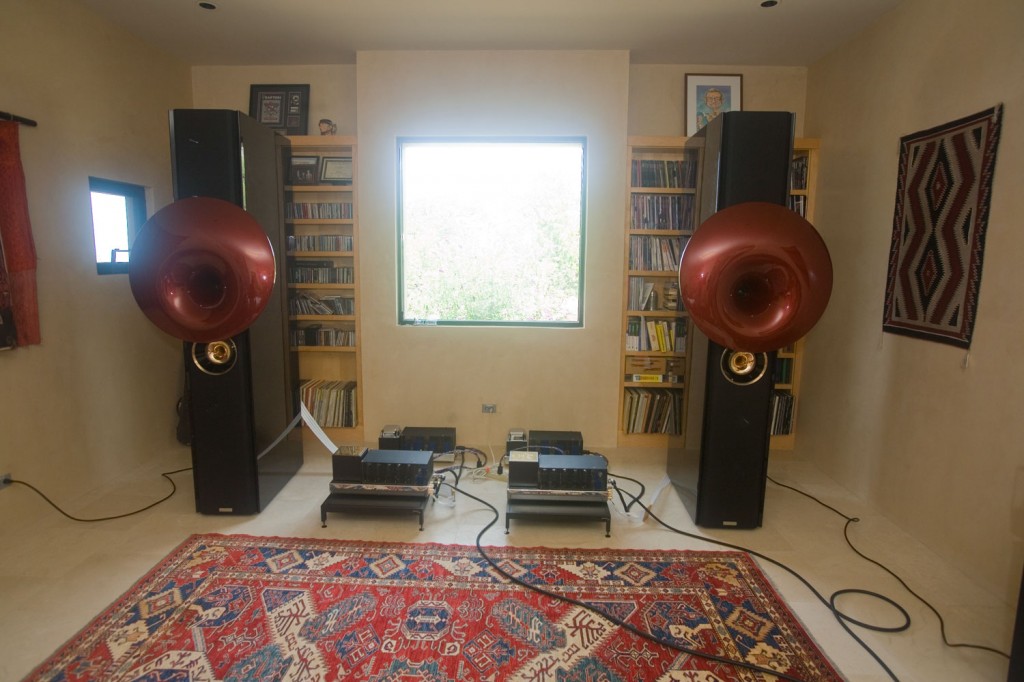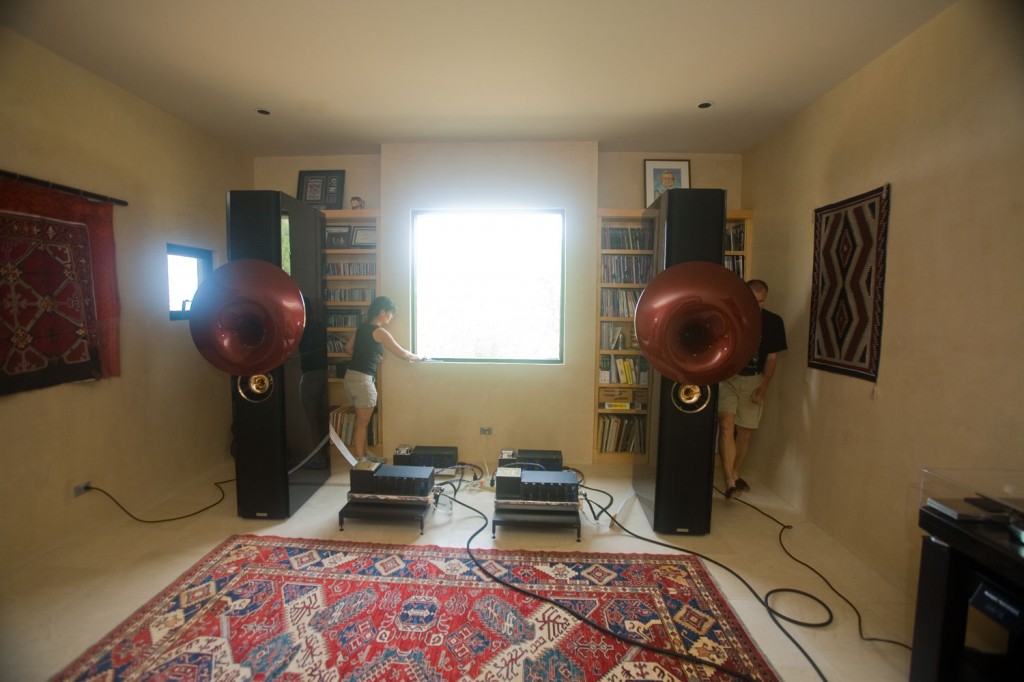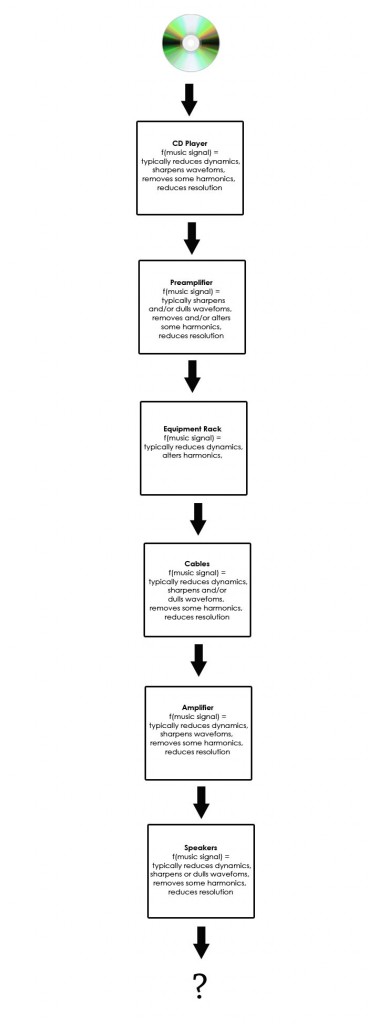Acapella APOLLON speakers: uncrating and setup
A few months ago we uncrated and setup a pair of new Acapella Apollon speakers.
These last several months have been a good time to take advantage of the Euro tanking against the dollar [these speakers are from Germany].
Darryl, the new owner, is happily letting us share these photos on the blog.
Although it threatened to rain, it did not. Which was good, as we had to carry some of the speaker units out of the garage and in through the wider front door. Or we thought we needed to. As things evolved we got better at our size-and difficulty-estimation skills.
A pickup-truck with a lift gate. We got the vibe that this was custom built. Sure can come in handy in places where semi-trailer trucks cannot easily access.
Ready for unloading. These crates weight between 250 and 700 lbs or so.
Yeah. Right. Usually there would be a palette-jack and with a little maneuvering there is just a little pushing and shoving and it is on the left gate. Then some modest pulling on the palette-jack and the crates would be safely in the garage.
Or, this is where I seem to be at my most useful, there is brute force applied and the crate is kind of lifted and carried a bit. Hopefully, ASAP, to be set on top of a 4-wheel furniture dolly. Then pushing the crate on the dolly into place.
But no.
The technique this guy used is different. I presume he does this often, as he is good at it.
He throws his entire weight [and he is not a big guy] against the crate as hard as he possibly can. It moves the crate a few inches. The again. And again.
It was a little scary having a 700 lbs crate teetering on the lift gate. But he was confident. And it did work.
After this photo was taken I had to put the camera down and kick Neli off the truck.
The problem with these types of approaches is they are dangerous. I get volunteered to help out quite frequently is situations like this. And invariably [INVARIABLY!] I have to jump or move my hand or elbow very, very quickly. Or get crushed by my overly exuberant companions.
All 4 crates happy in their nice safe garage. The two largest each contain a base unit of one of the two speakers. The mid-sized crate contains the two top units of the speakers. And the last create contains the two horns.
The two base units have been uncrated. Set upon 4-wheel furniture dollies. And wheeled in to the listing room.
Neli and Darryl happily lifting the top off the horn crate.
The top horn in the horn crate.
The bottom horn.
One of the top units has been wheeled into place. Ready for alley-ooping on top of one of the speakers.
I missed getting as many pictures of these moments of interest as I wanted.
Darryl had some people he trusted working on his yard so they did much of the heavy lifting. I stepped in to help [the units are not THAT heavy. Maybe 170 lbs or so]. But I ended up not doing much but looking anxious.
In this photo I think Neli is inserting special spacers between the speaker units.
Looking more like a speaker now. A big speaker.
Hooking up the top unit drivers to the crossover in the base unit.
One of the horn drivers ready to be attached to a speaker.
Things are coming together. Hard to take photos without people in it during times like this. When people are in the photos and they see the photos they often do not want me to post them 🙂
Yay! Horn driver attached to speaker. There are Apollons here.
Ready for hooking up to the amps and…. sweet music.
The speakers can go right up against the front wall, they are not ported, but we found they like a little room to breathe. Still, they went back far enough that the current listening position is not that much different than that used for the [extremely well-optimized setup of the] Avalon Eidolons that were here previously.
These are now my favorite go-to wishlist speakers since I like smallish tube amps and there are just not that many really high-quality efficient speakers out there.
These also have the advantage of also being very accurate [and amazingly quite good resolution] and at the same time musical-sounding [and that is a combination one also does not see much of out there].
More about the sound in a future post… 🙂

